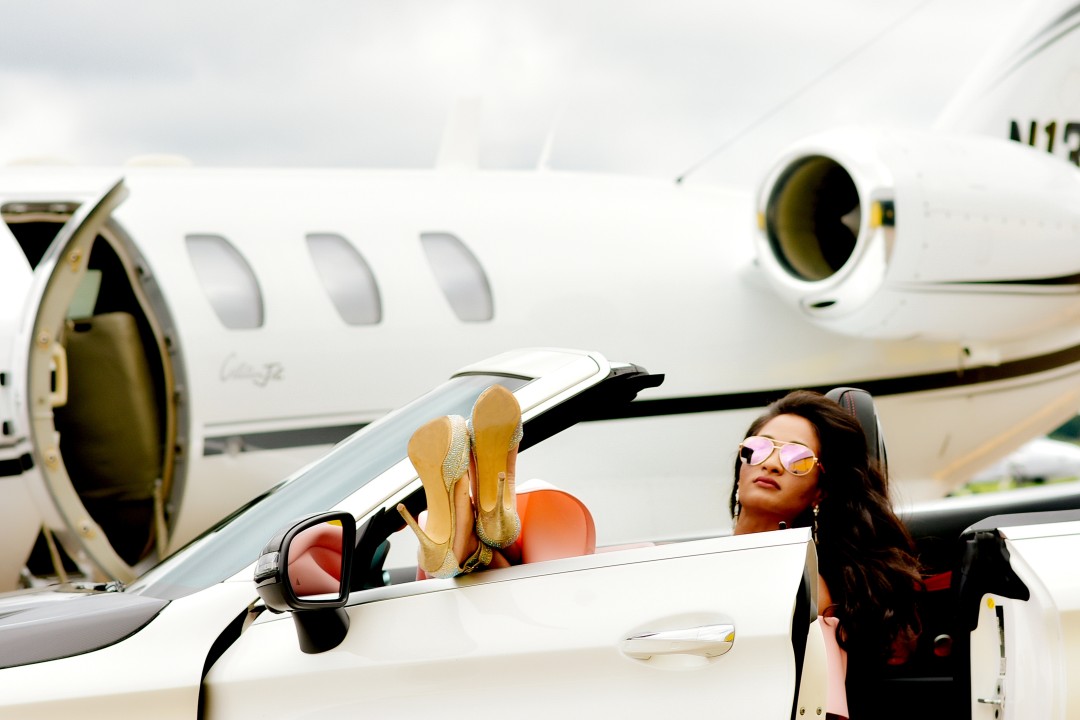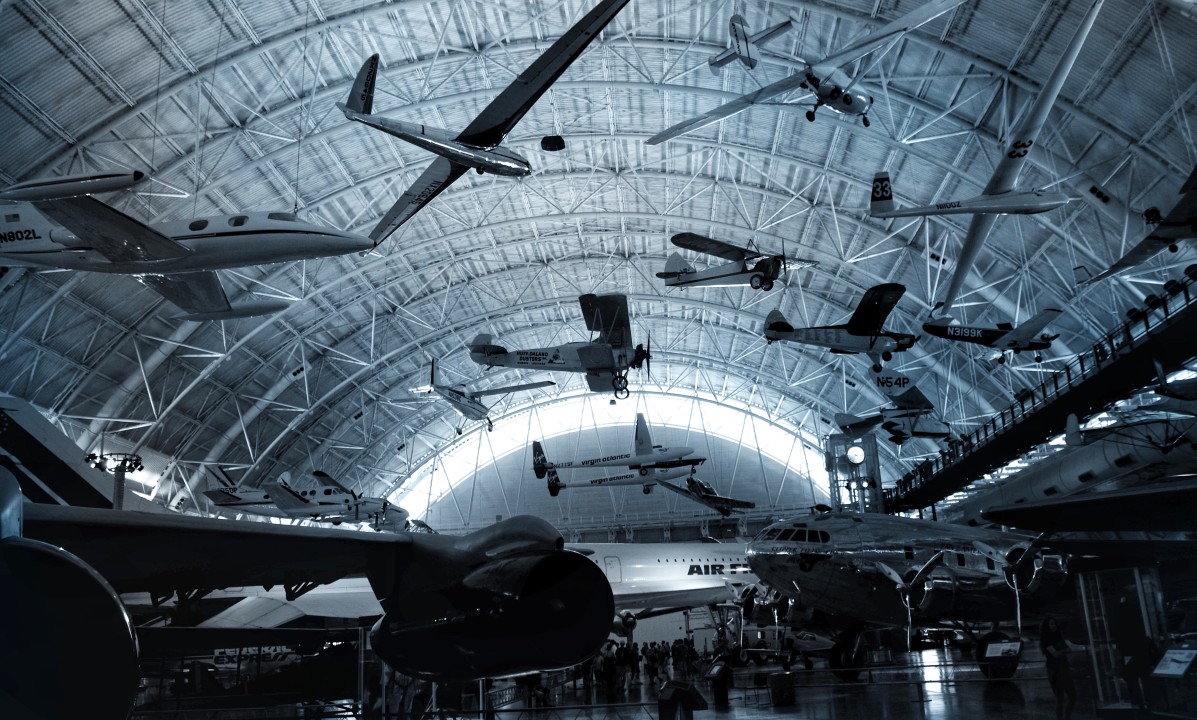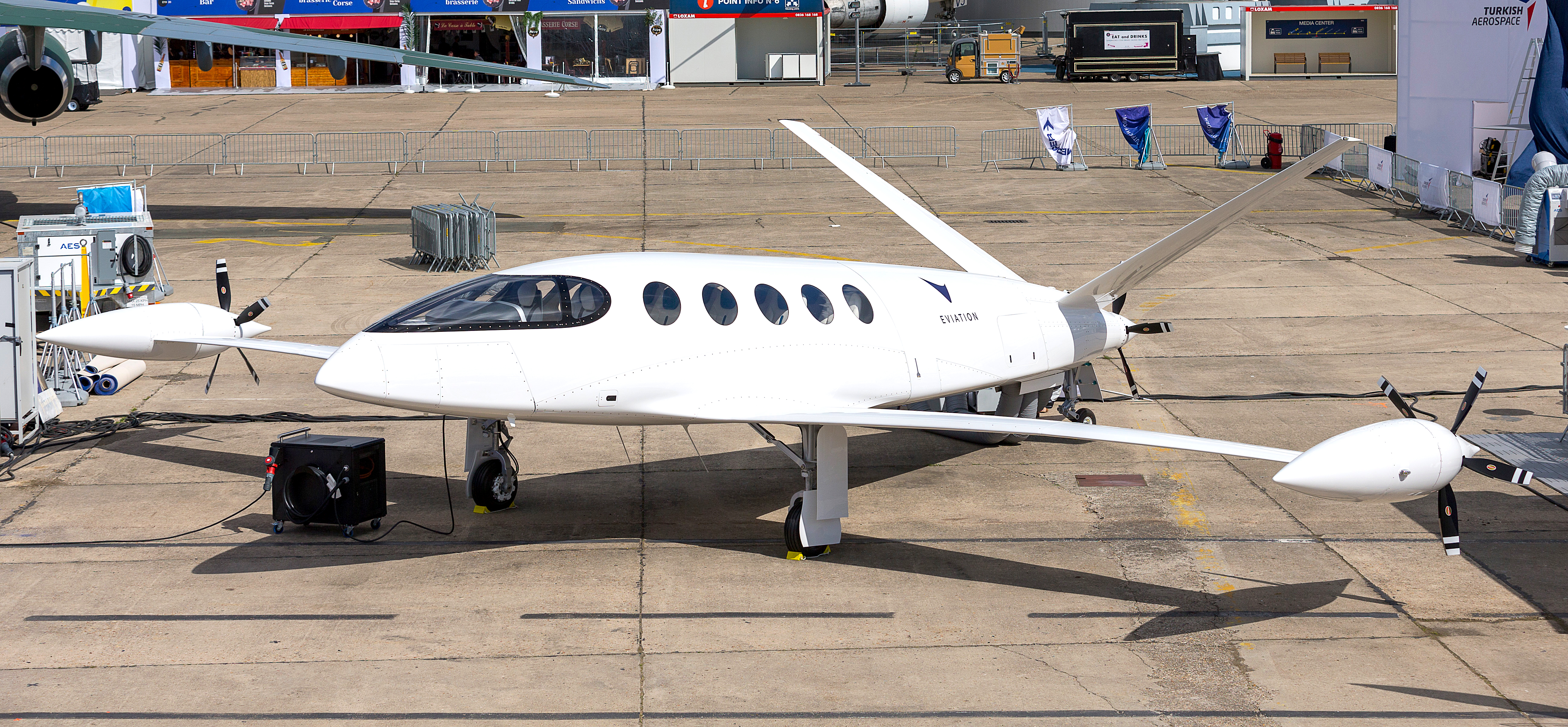Air Travel: A Shift From ’Public’ to Private?

In recent times, there has been an observed increase in the number of private flights and people utilizing private charter flights to travel in opposition to commercial airlines. Even prior to the COVID-19 pandemic, private jets sales and individuals who are flying privately have been increasing. Fast forward to the height of the pandemic, there was a massive influx of private aircraft travel due to the virtual shutdown of the airline industry. This trend has continued into today, and is showing similar growth in coming years. Public in this article is used to represent travel via U.S airlines while Private represents individuals that are traveling via owned private aircraft or chartered services.
Key Takeaways
- Private air travel has become more popular. The pandemic brought about an appeal to fly privately during the airline shut down, some of those who started flying privately are sticking with it.
- The shift between a preference for private travel instead of using public airlines would have run-offs effects for other parts of the industry. Especially with this shift being present in business travelers.
- Airlines and private charters are having to compete for pilots, this may benefit pilots individually, giving them greater flexibility, pay, and freedom, this does make the current pilot shortage exaggerated and may stunt its recovery.
Why the shift to private air travel?
There are many reasons why individuals and businesses may choose to fly private. These reasons were amplified with the virtual shutdown of airlines during the pandemic, and are still prevalent today. Some of the main reasons for the wide shift from Public to Private flights include:
Appeal to Business travelers: For business travelers and corporate executives, time is crucial and cannot be compromised. The appeal for private travel is clear, there are many reasons that business travelers are starting to prefer private charter flights instead of public airlines. Elite Jets highlights how private jets allow travelers to save a lot of time, can fly into almost every airport, allow for convenient paths and destinations, and flights don’t have to be made months in advance. Private travelers can avoid lines at the check-in counter, security and boarding gate, and the risk of delays or cancellations. Private flights also allow for more privacy when dealing with business matters or for working while on the flight.
Convenience for affluent travelers: Statista reports that during a 2020 survey, people stated that saving time is the main motivation for flying privately. The ability to use airports that airlines don’t serve was revealed as the second most important reason for private flying.Travelers who are able to afford such are finding convenience with private flights. With the near total shut down of the airline industry, many affluent travelers found an appeal in flying privately, similarly to the reasons that business travelers may prefer to travel via private jet, the added convenience of timing, space, and privacy are why some affluent travelers are sticking with private flights as opposed to using commercial airlines.
Increase in aircraft purchases: As mentioned in our Digest, ‘Private Jet Travel Boomed in 2021’, Many travelers continue to prize private jets for their safety, privacy, and comfort amid the pandemic, boosting the private aviation industry to new heights. Some of the leading global private jet companies have reported record sales in 2021, and the upward trend is continuing into 2022.
The shift and the air travel industry.
While there may be a shift for business travelers and more affluent groups in private air travel, the amount of travel overall will not decrease, the amount of travel could actually increase and so will revenues. Individuals will be traveling in smaller numbers which requires more trips per aircraft, even for smaller aircrafts. This inevitably means that travel expenses will go up for those able to afford it in the privately owned and charter segments. Those who have made the shift to the private segment are willing to pay the premium for the extra convenience, and were willing to start shifting particularly during the pandemic for safety concerns.
The cost of traveling private versus via airline: Private jet charters and commercial airlines, even in first-class are two very different experiences and price points. Chartering a private jet allows you to maximize your time at your destination and minimize the number of hours you spend traveling, but at a cost. While flying with an airline means you are still at the mercy of taking the route of a commercial airline, you save money based upon that factor. Flying on a private jet or first class requires a great deal of money, but both offer passengers luxuries they wouldn’t get in the economy cabin of a commercial flight. Bitlux Travel shows that first-class tickets on major U.S airlines can be anywhere from $700 to $1,200. While the exact same trip on a private jet could be anywhere from $5,500 to $15,000 per hour to start.
Continued driving factors: A shift toward private flying that more wealthy Americans saw as a necessary luxury during COVID-19 is now showing signs of becoming something else: a pricey but sought-after alternative to a premium ticket on a commercial flight. Many stayed for the convenience, with analysts and industry executives saying they see both more first-time jet owners and families and even small- and medium businesses flying private.These driving factors that made private flights appealing in the initial phases are still being a force to this day. COVID concerns along with greater challenges at the airlines means that the reasons for the shift are still present and continue to draw people in.
Competing for business travelers: those who benefit most from private flights are business travelers who absolutely, positively have to be there, something that’s harder than ever to accomplish flying the airlines. Individuals and companies are looking at private aviation. Executives from several of the biggest players in the market have said they are seeing increased queries related to business travel. While the expenses dealing with private travel may be high, Forbes shares some insight on how businesses are able to afford such things with fixed one-way rates, round trip discounts, long flight discounts. Also since the price of flying privately is typically the price of the entire aircraft, adding more passengers, so long that it’s permitted, can help lower the cost to individuals, as the private flight price would be the same regardless. Jet cards and fractional share ownership plans give you a contracted hourly rate based on occupied flight hours, essentially flyers are only charged when they are actually flying. In other words, you don’t have to pay the cost of repositioning flights before or after your trip. Some businesses even offer discounts on published rates, these discounts are meant to make private flights a price competitive point in opposition to airlines, and the same sort of discount can be leveraged for longer flights as well.
The effect of the shift on the airlines segment.
It is no secret that the majority of the airline’s business comes from business travelers. Over the past two years, airlines have seen a decrease in business travelers. A lot of businesses have stopped traveling entirely and operate remotely, through video conferences and digital hubs. There is this coupled with the fact that some businesses are realizing that flying privately may not necessarily be overly pricey for the added value. Some ways that this may affect the airline segment are as follows
Loss of revenue: Airlines had an 80% share of premium travel in 2021, down from 90% before COVID-19, according to Alton Aviation Consultancy. Business jets were often associated with entertainers and top executives. They now account for a quarter of U.S. flights, roughly twice the pre-pandemic share, according to research and consultancy WINGX.
Airlines are compensating: As mentioned in a previous article, ‘The Aviation Industry and Economic Uncertainties’, airlines are compensating for the loss of the business traveler and the revenue that comes from that. Airlines are having to compensate and offset these costs by possible mergers, taking on new routes, investing in better operating procedures, and possibly using aircraft to transport cargo while they carry passengers. Compensating in a financial sense may be a good strategy to mitigate possible effects.
Siphoning away pilots: An article of ours, ‘The Pilot Shortage – A Challenge for Airlines, Possible Boom for Flight Schools.’, goes into detail some of the ways that airlines are being challenged with an already existing pilot shortage. This may be amplified with the increased need for pilots in the private sector, some may choose to fly private aircrafts as the pay is potentially better or at least the same, and private aircraft require less from pilots to fly. If pilots are drawn away from flying with airlines they may put airlines at an inability to take advantage of increased demand for air travel, and there may be increases in the cost of operations for maintaining leases in upkeep for aircraft facilities.
How does the shift affect the private charter and ownership segment?
There is no doubt that this is a boom for the private charter and private ownership segment. So much so that we’ve seen an increase in the number of aircraft purchases over the last two years. We’ve also seen an increase in the number of Part 135 (aircraft services and management) operators. This means that this segment of the aviation industry is growing and that new players are coming in to take advantage of this growth.
Increase business for charter service operators: Latitude 33, shares that in July 2021 had the most private flights – 12,345 flights – since March 20, 2008. Many anticipate that business travel will become less important in the age of teleconferencing even when the threat of COVID-19 subsides. In 2020, many travelers utilized private jets for privacy and health concerns. Even after the peak, this private flying trend is continuing. Along with the safety and health concerns, flying private can be a faster travel time and a more luxurious experience.
Increased aircraft purchases: Sellers of small aircraft and private jets have seen a spike in sales, with buyers wanting greater safety and convenience in their flying experience.new private jet owners who want to travel for business or personal reasons on their own terms. Private jet demand is showing a strong upward trend in purchases and use. In the U.S., which accounts for more than 70% of the worldwide market, there were 197,103 private jet flights, according to WingX, 23% above pre-pandemic levels, as according to Latitude 33
Increased aircraft management: Increased private flight travel will also mean an increase in maintenance and other areas of the industry that deal with maintaining, and repairing private aircraft. Marshall Tetterton, Associate Professor of Aviation Maintenance Science at Embry-Riddle Aeronautical University, in an article with Avionics International, stated that “Projected growth for maintenance personnel is 5 to 10 percent, for technicians across all sectors in the industry. — the average growth rate is 5 to 10 percent over the next 5 or 10 years,” Since air traffic is increasing every year, the frequency of maintenance increases to keep aircrafts up and running.
How does the shift affects flight schools?
It is important to remember that flight schools are generally affected by fluctuations in pilot demand. Fewer individuals flying per aircraft means there will be a greater need for pilots to accommodate an increased demand in private aircrafts. This is believed to put some dampener on the resolution of the pilot shortage. However, It is much easier to solve a pilot shortage that is stemming from a greater ratio of pilot to passengers as in the airlines where the ratio can be up to 125 passengers per pilot or aircraft. In the private charter and ownership segments this ratio can practically only go as high as 10 passengers per pilot or aircraft. Flight school should have no problem with this arrangement as it will ultimately lead to a greater demand for pilots. Notwithstanding the above, there are some effects that are not necessarily good and we want to examine those as well.
Increased demand for pilot training: With the increased demand for pilots, there is the run-off effect of an increase for a demand of pilot training. This means that instructors are also going to be in high demand, as they are the ones that will be training the next generation of pilots. WIth this increased demand means that flight schools can expect to see an increase in their businesses and enrollments. While this is good, as mentioned in our previous article, ‘Inflation: Rising prices and its effects on pilots and their training’, good instructors and noteworthy flight schools are going to be in higher demand, which may make them more costly or more difficult to attend.
Reduction in flight instructors: It is evident that there are more jobs becoming available in the private charter segments of the aviation industry. It is important to note that within part 135 and sometimes operating on their part 91, pilots do not need to have 1500 hours and an ATP rating most of the time, to operate in these areas. That means as a flight instructor, you may not need to spend as much time training in a flight school to gain that 1500 hours for ATP requirements; the ability to work in the private charter space as a way of making those 1500 hours is possible. As the demand for pilots is drawing in new pilots, many will not want to stay in the position for long in order to take advantage of the demand for low-time commercial pilots. Flight Instructors are already typically scarce and do not stay in that position for long, with more job opportunities available in other segments of the industry, it could lead to a reduction in flight instructors.
Increased demand for aircraft: As the private charter and private ownership segment increases it increases pressure for aircraft demand. Particularly the aircrafts that flight schools will need to run operations. This is important to note because an increased demand for aircraft will put pressure on prices for either leasing or buying these aircraft. This increased demand for privately owned aircraft could put a strain on flight schools trying to acquire fleet and assets. Not only is the price for acquiring more aircraft going to be affected, but so is maintenance, labor, and parts; more aircraft being sold and used will ultimately require these things. These services and products are going to be in higher demand along with aircraft.
What does this shift mean for pilots?
A greater demand for the services of pilots across the industry is always a good thing for the pilot themselves. Since there is a shift from a higher ratio of passengers to pilots in the airlines as compared to the private segment, this may go on to cause an increase in the demand for the services of pilots. This is projected to increase the demand for pilots on a more individual level, leading to greater options for pilots.
Finding different ways for building hours: Pilots need to build up flying time, which is definitely time consuming and push the cost of training further if not done so efficiently. During this shift pilots will have to find ways to gain their flying times other than in flight schools. Some ways that pilots can build their times to help mitigate cost and meet their criteria better. Flight instructing is by far the most common way to build flight time, and with flight instructors in high demand, now is a great time to pursue a flight instructor certificate. Another way to build time by joining a flying club. One more creative way to build time is to fly aerial photographers. Despite the rise in popularity of drone photography, many photographers still choose to shoot aerial work themselves. Some pilots take their own photos while flying, and others are paid to fly while professional photographers capture the aerial shots. Still yet another is doing banner towing. Now, adding the ability for pilots to use the training hours they’ve already received while getting a commercial pilot license and going right into private charter services provide the greatest way to build hours if they intend to go to the airlines. Some may even stick with private charter or corporate flying as a career.
Increase pay and/or benefit: Due to the increased demand for pilots, sectors are going to have to appeal to their wants and needs to make them want to stay with either the private or public flying group. Pilots are more in demand and their services are being called for use more often, they will likely respond by immediately seeking higher paying jobs and certifications to get a head start on their financial path within the industry, especially if they are recently new to the industry. New commercial pilots may go immediately into commercial pilots positions or getting certified as instructors to ensure that they are able to pay off flight school costs. Pilots will definitely want to ensure they are getting their money’s worth especially with the higher cost of training, so they will waste no time to find a job with their new skills, especially for companies and positions that pay well, such as corporate flying.
Increased interest in becoming pilots: Due to the increased demand and greater options for pilots this may have the further effect of peaking further interest in individuals for becoming pilots. Pilots have more liberty now as far as their flexibility within the industry and being in an area of job security of projected growth. Pilots are now at the privy of their own imaginations when it comes to their capabilities and where and how they will play in the market. With high demands, secure job positioning, and rapid projected growth, the interest in becoming a pilot, or gaining new certifications can remain high and stay.
What could things look like moving forward?
As a result of all the things mentioned above. The aviation industry moving forward would see some run-off effects that may come with a shift from public to private flights for those who may afford such. The pandemic brought about a myriad of obstacles for the airline, and flight school segments, while private and charter aviation segments were able to be leveraged during this time, so the environment is already working in these areas favor. If the continued projected growth for the private sector is met it could have some adverse effects.
Airline mergers: Our previous article, ‘Airline Mergers: A Solution To The Pilot Shortage?’, mergers can be a viable solution for airlines during times that are presented with obstacles. Most of the reasons for an airline’s merger could be linked back in some form to economies of scale; When an airline merges with another the combined entity can sometimes be twice as large, significant economies of scale can be derived from the overall cost of operations which the airline can then use to either pull its way out of a negative economic situation or as a means to deal with the pilot shortage. Airlines might find it to be a better political move to merge with another airline and be able to keep the jobs from the more troubled, or in some cases both if they’re in equal economic conditions, from being lost. Some other reasons that a merger might be a response from airlines are with shareholder equity preservation and asset acquisition.
Pilot shortage worsening: An unfortunate run-off effect that could result from a greater shift to private air travel is that the pilot shortage will remain or be fixed at a slower-rate. As mentioned above, private flights carry a much less passenger to pilot ratio that airline flights do. This means that it takes more pilots to more the same amount of people when it comes to flying on a private aircraft. If pilots are going to be drawn to flying for private and charter flights, then they may not want to fly for airlines at all. With the need for pilots being stretched between the two sectors or public and private flights, the current pilot shortage would greatly be affected in terms of its growth, and rate of which new pilots are joining.
Increased cost of training: Inflation has been shown to have adverse effects on airlines, flight schools, and other aviation businesses, but it also has an effect on pilots with their cost of training. The cost of training is increasing alongside inflation due to its own factors, along with other areas of the aviation industry becoming more costly, this can become a substantial financial hurdle for pilots. See our article, ‘Inflation: Rising prices and its effects on pilots and their training’, for more information about this topic.
Fight for new regulations: PIlots may start to seek answers from the FAA to allow for new pilots to avoid the 1,500 hour threshold for co-pilot experience. Some airlines are asking for a lower flight hour requirement for co-pilots. If this minimum were lowered, then it would save money for pilots on their training. Airlines could start their own training programs, educating pilots in-house, typically with the stipend of them working for them for a certain amount of time at the least. See our articles, ‘Airlines And Pilot Training Academies’ and ‘Why are Margins so low in the Airline Industry?’, for more information about this topic.
The result of it all..
The aviation industry has been poised with a certain set of challenges in recent times. Starting with the pandemic, the obstacles presented needed an immediate response from the industry, and unfortunately during the peak of it all, airlines may have been affected the worst. While there was a virtual complete shutdown of the airline industry, private flights started to see an uptick in demand, which has continued into today.
While what is observed has different implications for different sectors of the industry, it is important to be aware of the ways the industry and its consumers are shifting in terms of preferences. Private flights are much more expensive than flying public, however, many are seeing how flying private can be a much greater experience and value that could be absolutely necessary, especially for business travelers. As we build a better tomorrow, it’s important to be aware of the world of today.
Author’s Note: The arguments laid forth in this article have not taken into consideration a total market or economic downturn that would affect the overall trend from public to private air travel.
——————————————
Thank you for reading this week’s On Aviation™ full article. How do you think the shift from public to private flight preference will affect the industry? Please share your thoughts in the comments below and remember to continue the conversation on our Twitter and Instagram.
Orlando – On Aviation™




